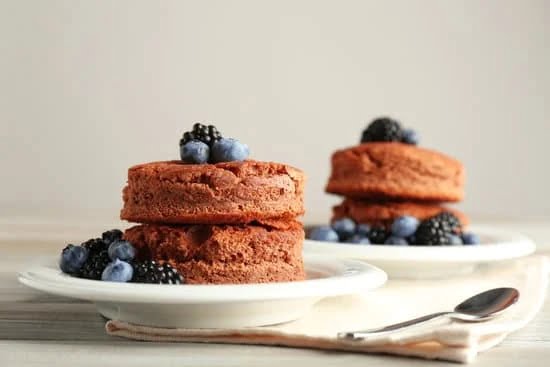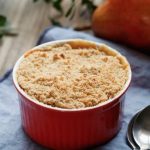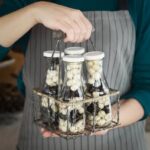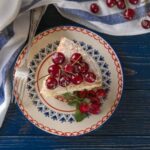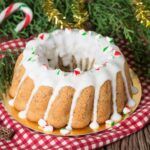Are you ready to add a touch of the tropics to your cakes? Look no further than palm tree cake decorations. Whether you’re planning a beach-themed party, a luau, or simply want to bring some island vibes to your desserts, palm tree cake decorations are the perfect choice.
These versatile and beautiful decorations can instantly elevate your cake and wow your guests with their lifelike appearance. In this article, we will guide you through the process of creating stunning palm tree cake decorations that will make your desserts stand out from the crowd.
When it comes to tropical-themed events and parties, palm tree cake decorations are all the rage. They have become increasingly popular for their ability to transform an ordinary dessert into a stunning masterpiece.
With their striking appearance and intricate details, these decorations add a touch of whimsy and elegance to any cake. Whether you’re planning a birthday celebration or a wedding by the beach, palm tree cake decorations are sure to impress your guests and create a memorable experience.
To create fabulous palm tree cake decorations, you’ll need the right materials and tools at your disposal. This includes fondant or gum paste in various colors, food coloring for realistic details, piping bags for precise application, and an assortment of cake decorating tools.
In the upcoming sections of this article, we will provide you with a comprehensive list of all the materials needed as well as step-by-step instructions on how to sculpt the perfect palm tree trunk and master leaf formation techniques. We’ll also share ideas on decorating the base of your cake for that added beach vibe and give tips on assembling and securely placing your palm tree decorations.
Get ready to unleash your creativity as we dive into the world of palm tree cake decorations. With our guidance and helpful tips throughout this article, you’ll soon be able to create stunning tropical-themed cakes that will transport everyone straight to paradise. So gather your supplies and get ready to embark on this fun and exciting journey of cake decorating. Let’s bring the tropics to your desserts.
Materials You’ll Need for Your Palm Tree Cake Decorations
When it comes to making palm tree cake decorations, having the right materials and tools is essential. In this section, we will provide you with a comprehensive list of everything you’ll need to create stunning palm tree cake decorations.
Fondant or Gum Paste
Both fondant and gum paste are commonly used in cake decorating. Fondant is a smooth, pliable icing that can be rolled out and draped over cakes for a flawless finish. Gum paste, on the other hand, is a firmer and more elastic medium that is perfect for creating intricate decorations such as flowers and leaves. Depending on your preference and level of expertise, you can choose to work with either fondant or gum paste for your palm tree cake decorations.
Food Coloring
To bring your palm tree cake decorations to life, you will need food coloring to tint your fondant or gum paste. Opt for gel-based food coloring as it provides vibrant colors without adding too much moisture that could affect the consistency of your medium.
Piping Bags and Tips
Piping bags and tips are essential for creating texture and details on your palm tree trunk and leaves. Look for a set of different-sized round tips to give you versatility in creating varied textures. Additionally, make sure you have disposable piping bags on hand for easy cleanup.
Cake Decorating Tools
Apart from the aforementioned materials, there are several other cake decorating tools that will come in handy while making palm tree cake decorations. These include:
- Rolling pin: To roll out your fondant or gum paste to the desired thickness.
- Ball tool: Used to shape petals or add texture to leaves.
- Modeling tools: These tools have various tips used for sculpting, shaping, and adding details.
- Leaf cutters: These specialized cutters come in different sizes and shapes specific to various types of leaves.
- Small paintbrushes: Perfect for adding finer details and applying edible glue.
- Edible glue or water: Essential for sticking together various fondant or gum paste pieces.
By gathering these materials and tools before you start your palm tree cake decorations, you’ll be well-prepared to bring the tropics to your desserts. So, let’s move on to the next section to learn how to sculpt the perfect palm tree trunk.
Step-by-Step Guide
Creating a realistic palm tree trunk is an essential step in making palm tree cake decorations. With the right techniques and tools, you can achieve a lifelike look that will impress your guests. In this step-by-step guide, we will walk you through the process of sculpting the perfect palm tree trunk using fondant or gum paste.
- Start by preparing your fondant or gum paste. Knead it until it becomes soft and pliable. If necessary, add a small amount of vegetable shortening to prevent sticking.
- Shape the base of your trunk by rolling a ball of fondant or gum paste. This will be the foundation for your palm tree decoration. Ensure that the size of the ball is proportionate to your cake.
- Roll out a long strip of fondant or gum paste to create the main body of the trunk. The thickness of this strip will depend on how thick you want your trunk to be.
- Carefully wrap the strip around the base, starting from the bottom and working your way up. Smooth out any creases or wrinkles as you go along.
- Use a cake decorating tool, such as a veining tool or toothpick, to add texture and details to your trunk. Create lines and indentations to mimic natural wood patterns.
- If desired, add additional details such as knots or cracks using small pieces of fondant or gum paste. Attach them securely with edible glue or water.
- Allow your palm tree trunk to dry completely before handling it further or adding other decorations onto it.
Remember, practice makes perfect when it comes to sculpting palm tree trunks for cakes. Don’t be afraid to experiment with different textures and techniques to achieve unique looks for your cakes.
| Materials Needed | Tools Needed |
|---|---|
| Fondant or gum paste | Veining tool or toothpick |
| Food coloring (for tinting the fondant or gum paste) | Cutting tools (if adding additional details) |
| Edible glue or water | – |
Adding Luscious Leaves
Hand Shaping
One of the techniques for creating palm tree leaves is through hand shaping. Begin by rolling out a small piece of fondant or gum paste into a thin, elongated shape. Next, use your hands to gently shape and mold the fondant or gum paste into the form of a palm tree leaf.
Pay attention to the natural curves and lines that are typically found on palm leaves. Use your fingers to create pleats or texture along the edges of the leaf for added realism.
Using Leaf Cutters
Another method for forming palm tree leaves is by using leaf cutters. These specialized tools come in various sizes and shapes to mimic different types of palm leaves. Roll out your fondant or gum paste to an even thickness and press the leaf cutter firmly into it. Carefully remove the excess around the edges and release the cutout leaf from the cutter. Use your hands or small tools to add texture and define the veins on each leaf.
Adding Realistic Veining
To bring even more authenticity to your palm tree leaves, add realistic veining details. You can use various tools such as a veining tool, toothpick, or even a clean paintbrush to create these veins on each leaf. Gently press these tools onto the surface of the leaf, following its natural lines and patterns. This technique will give your leaves depth and make them appear more lifelike.
Experiment with different shades of green food coloring to achieve a variety of leaf colors, as different varieties of palms have their unique shades. Allow your handmade leaves to air dry before attaching them to your cake.
By mastering these various techniques for forming palm tree leaves, you’ll be able to create stunning cake decorations that perfectly capture the essence of tropical beauty.
Bringing the Beach Vibes
Creating a stunning palm tree cake decoration goes beyond just sculpting the perfect trunk and luscious leaves. To truly embrace the tropical theme, it is essential to pay attention to the cake base as well. Decorating the palm tree cake base allows you to bring in those beach vibes and complete the overall look of your masterpiece. Here are some ideas and suggestions for decorating the palm tree cake base:
- Create a Sandy Beach: One way to instantly transport your cake to a tropical paradise is by creating a sandy beach effect on the cake base. Crushed cookies or graham crackers can be used to simulate sand. Simply spread them around the base of the cake, making sure to leave some areas bare for a more realistic look.
- Add Edible Seashells and Starfish: Edible decorations like seashells and starfish can further enhance the beach vibes of your palm tree cake. These can be made using molds or shaped by hand using fondant or gum paste. Once they are dry, simply arrange them strategically on the sandy base.
- Incorporate Edible Floral Accents: Tropical flowers are an iconic symbol of the beach and can add a burst of color to your palm tree cake. Create edible flowers such as hibiscus, plumerias, or orchids using fondant or gum paste. Arrange them around the base of the palm tree trunk or place them randomly on top of the sand.
- Consider Adding Edible Palm Coconuts: For an extra touch of authenticity, consider adding edible coconuts at the base of your palm tree cake decoration. These can be made by shaping brown fondant or chocolate ganache into small coconut-like spheres and placing them around the cake.
Remember that when decorating the palm tree cake base, it’s crucial to ensure that all added elements are securely placed and balanced with each other so that they don’t shift during transportation or cause any stability issues for the cake. With these beach-inspired decoration ideas, you can take your palm tree cake to the next level and transport your guests to a tropical paradise with every slice.
Assembling and Placing the Palm Tree Cake Decorations
Now that you have sculpted the perfect palm tree trunk and mastered the art of creating luscious leaves, it’s time to assemble and place your palm tree cake decorations. This step-by-step guide will ensure that your palm tree cake stands tall and majestic on your dessert table.
- Prepare the Base: Before assembling the palm tree, make sure your cake is securely placed on a sturdy cake board or stand. If you are working with a tiered cake, use dowels or straws to provide additional support between the layers.
- Attach the Trunk: Begin by gently inserting a wooden skewer or dowel into the bottom of the palm tree trunk, leaving enough length to securely anchor it into the cake. If using fondant or gum paste for the trunk, moisten the end with water or edible glue before inserting it into the cake.
- Secure with Fondant: To ensure stability, roll out a small piece of fondant or gum paste and wrap it around the base of the trunk where it meets the cake. Smooth and blend the fondant into both surfaces for a seamless finish.
- Add Leaves Gradually: Start by attaching larger leaves at varying heights along the top of the trunk. Insert them directly into the fondant-wrapped base, angling them outward slightly for a more natural look. Use a small amount of edible glue or water if needed to secure them in place.
- Build Layers: Continue adding leaves in smaller sizes as you work your way down the trunk, gradually decreasing their height. This layering technique creates depth and dimension, replicating how palm trees grow in nature.
- Adjust Placement: Step back frequently to evaluate your creation from different angles. Make any necessary adjustments by repositioning leaves or trimming them to achieve balance and symmetry.
- Final Touches: Once all leaves are in place, take time to fine-tune their positioning and angle. Use a small craft brush or toothpick to add texture and veining details to the leaves, enhancing their realism.
Remember, stability is key when assembling palm tree cake decorations. If needed, provide additional support by using toothpicks or wires discreetly inserted into the trunk and attached to the cake.
With your palm tree cake decorations assembled and securely placed on your dessert masterpiece, you are one step closer to creating a tropical paradise on your table. In the next section, we will explore optional enhancements that can further elevate the beauty of your palm tree cake and help bring your vision to life.
Adding Flair
When it comes to creating palm tree cake decorations, there are endless opportunities to add flair and elevate your tropical masterpiece. In this section, we will explore some optional enhancements that can take your palm tree cake to the next level. These additions can truly make your cake stand out and impress guests at any event or party.
One optional enhancement that can add a fun and realistic touch to your palm tree cake is edible coconuts. You can use chocolate truffles or molded white chocolate spheres to create the look of coconuts on your palm tree. Simply place them strategically on the trunk or scatter them around the base of the cake for added effect.
Another idea is to incorporate miniature beach chairs into your palm tree cake decorations. These tiny chairs can be made from gum paste or fondant and positioned near the base of the tree as if someone is relaxing under its shade. You can also add a small edible umbrella to complete the beach vibe.
For a burst of color and freshness, consider adding edible tropical flowers to your palm tree cake. These flowers can be made from gum paste or fondant using flower cutters and molds. Arrange them along with the leaves on the branches of your palm tree for a vibrant and exotic display.
To showcase these optional enhancements, you may want to consider styling and photographing your palm tree cake in an appealing way. Choose a tablecloth or backdrop that complements the tropical theme, and arrange additional elements such as seashells, sand, or tropical fruits nearby for added aesthetics. Use natural lighting or soft diffused lighting when taking photographs to capture the colors and details of your creation.
| Optional Enhancements | Description |
|---|---|
| Edible Coconuts | Use chocolate truffles or molded white chocolate spheres to create the look of coconuts on your palm tree. |
| Miniature Beach Chairs | Create tiny chairs from gum paste or fondant and position them near the base of the tree for added realism. |
| Edible Tropical Flowers | Create vibrant flowers from gum paste or fondant and arrange them along with the leaves on the branches of your palm tree. |
Troubleshooting Tips
Creating palm tree cake decorations can be a fun and rewarding experience, but it’s not without its challenges. In this section, we will address some common issues that you may encounter while making palm tree cake decorations and provide you with helpful troubleshooting tips to overcome them.
One of the most common challenges when working with fondant or gum paste is dealing with cracks. Cracks can occur when the material dries out too quickly or if it is rolled too thin. To prevent cracks, make sure to knead your fondant or gum paste until it becomes pliable and slightly warm.
If you find that your material is drying out too quickly, you can cover it with plastic wrap or a damp cloth while you work on other parts of the decoration. If cracks do appear, don’t worry. Simply smooth them out gently using your fingers or a small ball tool.
Another challenge that may arise is sagging palm tree leaves. The weight of the leaves combined with gravity can cause them to droop over time. To prevent this, consider adding a support structure within the leaf itself. You can use a thin wire or toothpick as a backbone for each leaf before attaching it to the trunk. This added support will help keep the leaves upright and prevent sagging.
Durability is another aspect to consider when creating palm tree cake decorations. You want your decorations to be sturdy enough to withstand transportation and handling without falling apart. To enhance durability, make sure that your materials have fully dried before assembling the decoration. Additionally, avoid using heavy or moist fillings that could weigh down the structure of your cake and potentially cause it to collapse.
By being aware of these common challenges and employing these troubleshooting tips, you will be well-equipped to create stunning palm tree cake decorations that are both resilient and visually appealing. Don’t be discouraged if things don’t go perfectly the first time – practice makes perfect, and each attempt will bring you closer to mastering this tropical cake decoration technique.
So, roll up your sleeves, embrace the challenges, and let your creativity shine through as you create your own tropical edible masterpiece.
Showcasing Your Masterpiece
Once you have successfully crafted your palm tree cake decorations, it’s time to showcase your masterpiece by styling and photographing it. Styling your cake will enhance the overall presentation and create an inviting atmosphere that captures the essence of a tropical theme. Additionally, capturing beautiful photographs of your creation allows you to preserve the memory and share it with others. In this section, we will explore some tips and techniques for styling and photographing your palm tree cake decorations.
First, consider the backdrop for your cake. To highlight the tropical vibes, choose a clean and neutral background such as a white tablecloth or a wooden surface. This will allow the colors of your cake and decorations to stand out. You can also add elements like seashells, pebbles, or fresh flowers surrounding the base of the cake to enhance the beachy aesthetic.
Next, think about lighting. Natural light is often ideal for capturing clear and vibrant images of food. Set up your cake near a window or in a well-lit area of your home to take advantage of natural lighting conditions. If necessary, use a reflector or white foam board to bounce light onto any shadowed areas of the cake.
When it comes to composition, consider using different angles to capture interesting perspectives of your palm tree cake decorations. Experiment with close-up shots that showcase intricate details like the texture on the trunk or veins on the leaves. You can also zoom out to include other elements like coconut shells or miniature beach chairs for added visual interest.
In terms of camera settings, use a low aperture (around f/2.8-f/5.6) to achieve a shallow depth of field that keeps focus on specific details while blurring out distracting backgrounds. Adjust the ISO depending on the available lighting conditions – lower ISO values (around 100-400) are preferable for reducing noise in well-lit settings.
Remember to take multiple shots from different angles and distances so that you have plenty of options to choose from. Experiment with different compositions, lighting setups, and props to find the perfect shot that showcases your hard work and creativity.
By following these styling and photography tips, you can ensure that your palm tree cake decorations are beautifully presented and captured. So go ahead and embrace the tropics as you showcase your palm tree cake masterpiece to the world.
Conclusion
In conclusion, palm tree cake decorations offer a delightful and tropical touch to any dessert. By following the step-by-step guide provided in this article, you can create stunning and realistic palm tree cake decorations that will impress your guests. The materials needed are easily accessible and the techniques can be mastered with practice.
Whether you are planning a beach-themed party, a luau, or simply want to add an exotic flair to your desserts, palm tree cake decorations are the perfect choice. Their versatility allows for endless creativity and customization. You can play around with different colors, shapes, and sizes to suit your theme and personal style.
Don’t be afraid to enhance your palm tree cake decorations with optional elements such as edible coconuts or miniature beach chairs. These additional touches will elevate your cakes and make them even more visually appealing. Remember to troubleshoot common challenges along the way and take beautiful photographs of your masterpieces to showcase your creativity.
So why not embrace the tropics and bring the beach vibes to your next special occasion? With stunning palm tree cake decorations, you can transport your guests to a tropical paradise right at the dessert table. Unleash your imagination, have fun experimenting with different techniques, and create extraordinary cakes that will leave a lasting impression.
Frequently Asked Questions
How to make a palm for a cake?
Making a palm for a cake can be done by using fondant or gum paste. First, you will need to color your chosen medium green to resemble the color of palm leaves. Next, roll out the fondant or gum paste into individual leaf shapes. You can use a knife or leaf-shaped cookie cutter to create realistic looking leaves with pointed ends and slightly curved edges.
To give the leaves texture, gently press lines onto them with a toothpick or veining tool to mimic the veins found in palm leaves. Allow the leaves to dry and harden before attaching them to your cake. Finally, position the leaves together vertically at their bases using edible glue, water, or additional softened fondant/gum paste to secure them in place on top of your cake.
How do you make bark for tree cakes?
Creating bark for tree cakes can add a realistic touch to your design. To make edible bark, start by kneading modeling chocolate or fondant with brown food coloring until it reaches the desired shade of brown for the bark. Then take small portions of this colored medium and roll them into long strips resembling tree barks – you can vary their width and length for more natural-looking results.
To add texture and depth to the bark, use tools like toothpicks or silicone texture mats to create grooves and indentations that imitate real tree bark patterns. Once you achieve the desired look, carefully adhere these strips onto your cake by brushing a thin layer of edible glue, water, or icing onto both the backside of each strip and the area where it will be placed on the cake surface. Press them firmly but gently against the cake until they adhere securely.
How to make chocolate palm leaves?
Crafting chocolate palm leaves involves several steps to achieve an authentic appearance using melted chocolate as your medium. Begin by tempering your favorite type of chocolate (milk, dark, white) based on its specifications for proper melting and cooling processes while ensuring a glossy finish is achieved once set. Using a piping bag fitted with a small plain round tip or ziplock bag with one corner snipped off, pipe elongated leaf shapes directly onto parchment paper. Work quickly before the chocolate hardens as you create each leaf with a pointed end and gently curved sides.
Remember to vary the leaf sizes for added realism in your final arrangement. Once all the leaves are piped, allow them to set completely at room temperature or refrigerate for a shorter duration of time. Carefully peel them off the parchment paper once hardened, and they’re ready to be used as decorations on top of your cake or other desserts.

Welcome to our cake decorating blog! My name is Destiny Flores, and I am the proud owner of a cake decorating business named Cake Karma. Our mission is to provide delicious, beautiful cakes for all occasions. We specialize in creating custom cakes that are tailored specifically to each customer’s individual needs and tastes.

